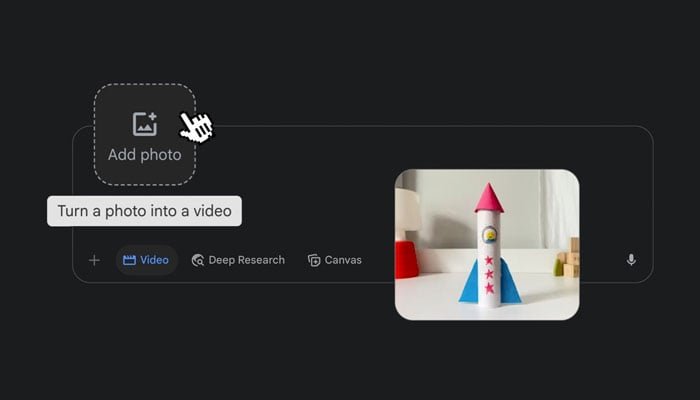Google has widened access to its advanced video generation model, Veo 3, making it available to Google AI Pro subscribers in over 150 countries, including Pakistan, the company said in a press release on Friday.
The update introduces a photo-to-video feature that allows users to instantly turn still images into lively eight-second video clips with sound.
Built on Veo 3, first launched earlier this year, the feature lets users bring their favourite photos to life using Google’s advanced AI technology.
In just seven weeks, more than 40 million videos have been created worldwide, with users reimagining fairy tales and experimenting with ASMR. This new feature opens exciting possibilities for Pakistan’s fast-growing community of digital storytellers and content creators.
How the Veo 3 feature works
To make a video from a photo, select Videos from the tool menu in the prompt box, upload a photo, then describe the scene and any audio instructions. The system will then generate a dynamic video.
Currently available to Google AI Pro and Ultra subscribers in select countries, the tool lets users animate personal moments, creative sketches, or even artworks.
Simply upload a photo, describe the scene with audio cues, and Gemini will generate a downloadable or shareable video. These tools are also built into Flow, Google’s AI filmmaking platform.
Creative tools in Flow
Flow now supports speech, sound effects, and background audio in video clips, though audio generation is still experimental and may produce mixed results.
Another feature, Frames to Video, lets users turn personal images into short, dynamic clips.
It is also available on Veo 3 Fast, helping subscribers maximise their credits. Flow and Google AI Ultra are now accessible in 140+ countries, further expanding access to these next-generation creative tools.
Building trust and safety in AI
Google says it is committed to responsible AI. Every video made with Gemini carries a visible watermark and an invisible SynthID marker to confirm it is AI-generated.
The company also runs “red teaming” exercises to stress-test its systems, spot risks early, and prevent misuse. Policies against harmful content are enforced, while user feedback is encouraged to strengthen safety.
Users can provide feedback by rating generated videos with thumbs up or down. Google says this input will help improve both safety features and the overall user experience.

